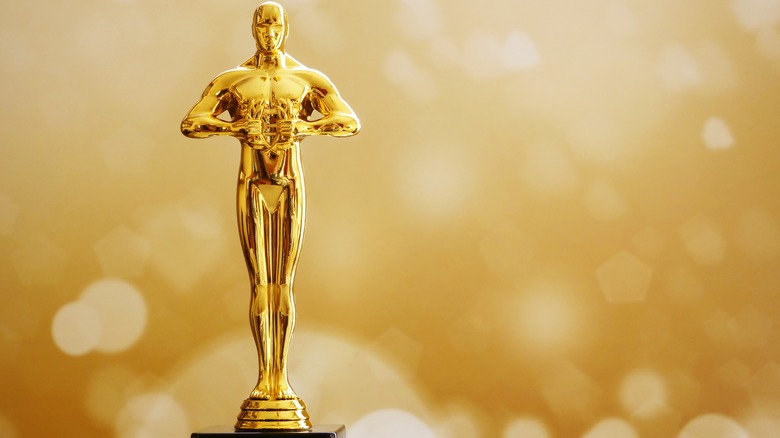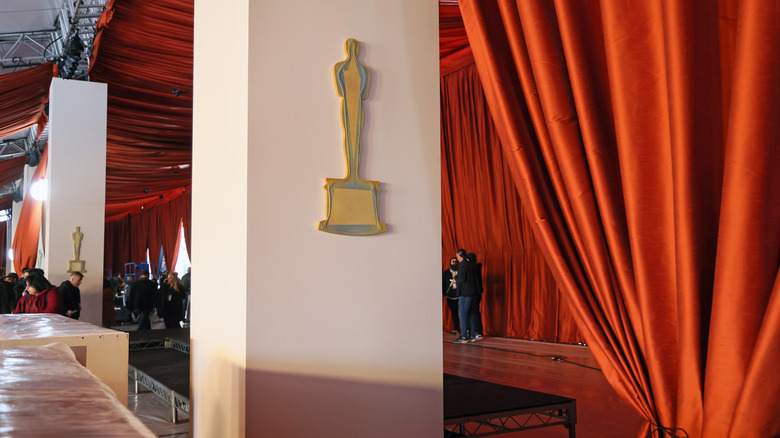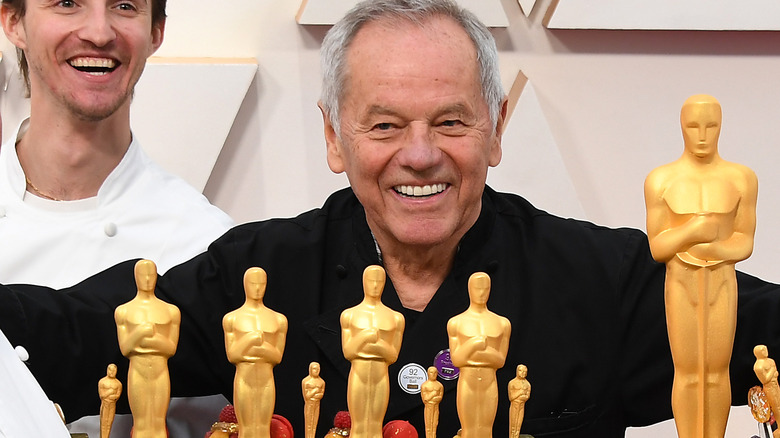What Old Hollywood Ate At The Very First Academy Awards
It is no Hollywood secret that awards season isn't what it used to be. Some say they don't make stars like they used to, while others credit the internet and social media for changing the concept of celebrity and giving birth to an entirely new population of superstars. Other critics say featured films have lost their spotlight as streaming services continue to win the popularity contest against movie theaters. At the same time, some consumers prefer supporting indie media over nepotism baby productions spit out by a massive corporate institution.
Whatever the reasons for the decline in America's awards show fandom, the shows still exist, and the tradition is a timeline marker of social history. And while some pine for Hollywood's golden era, there is one change everyone can get behind — the evolution of mealtime since the first Academy Awards.
The first Academy Awards was a landmark event, but the dinner menu left us hungry and wanting seconds ... of something else.
And the Award for the Most Boring Dinner Goes to
As explained by Love Food, the first-ever Academy Awards was held in May 1929 in Hollywood. The guest list topped at 270, tickets were $5, and it was a congratulatory event honoring the winners who had already been named.
Sure, it sounded like a fun time for early film folks, but, dare we say, the ceremony's dinner was a rather lackluster plate you would find at a white tablecloth restaurant where the most flavor comes from the seasoned crouton on the side salad.
Guests at the first Academy Awards were served broiled chicken on toast and sautéed filet of sole with a side of string beans and French fries, followed by cake and chocolate or vanilla ice cream.
Shades of beige must have been in that season. We guess it is safe to say that Old Hollywood may still retain some of its golden charm, but its food culture was still lacking.
Whether you are a film fan or not, popular culture is simultaneously a reflection of and an influence on society. The relationship makes it so even seemingly silly things like ostentatious awards shows are a valuable history lesson. And with the 95th Academy Awards here, what better time to dig deep into Oscar's past?
Dinner at the Oscars Changes with the Times
Many early Academy Award dinners were equally bland, but as Hollywood has grown more diverse, so has the dinner menu.
The dinners have often been a reflection of their era. For example, out of respect to the struggles of wartime, 1943's 15th annual show had guests eating humbly theater-style as opposed to at a lavish banquet, a tradition that continued. The seventies saw a push toward French cuisine (perhaps the fondue trend of the time had an influence?) The nineties welcomed Wolfgang Puck, who has become the Oscars' go-to chef, and nowadays, in addition to the fixed menu, celebrities can provide the chefs with their dinner requests.
From 2016 onward, a significant shift has been toward gourmet vegan offerings, with environmental concerns credited for emphasizing plant-based foods. And 2020's aquafaba mousse and bell pepper caviar piqued our interest and showcased the wild possibilities of vegan cuisine.
Not everything changes, though. As a nod to the golden ceremony, edible gold has regularly adorned many dishes (in 2017, guests received a 24-carat gold chocolate Oscar trophy — pretty cute, right?) And while the eats at the Oscars continue to evolve and adapt to its audience, one thing has remained the same — enter stage right bottomless champagne.


